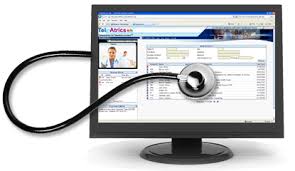
As a healthcare professional I believe patient engagement is critical to successful outcomes. From my perspective, the more engaged and involved a person is in their own healthcare the better chance we have of helping them achieve their personal health goals.

As a healthcare professional I believe patient engagement is critical to successful outcomes. From my perspective, the more engaged and involved a person is in their own healthcare the better chance we have of helping them achieve their personal health goals.
As the co-founder of a healthcare data company I find the research and statistics around patient engagement interesting and thought provoking. Over the past few month as I’ve been reading industry articles, different information and stats have caught my eye. Causing me to stop and think about what can we learn from what others have shared. I’ve been asking myself, how can we use our industry information and experience to help us better engage patients?
Going back through my notes I’ve pulled a few articles and stats I believe we can learn from and that can provide direction in our patient engagement efforts. As a start to the discussion, I’ve offered my thoughts and look forward to ideas and input from other healthcare professionals, patients and health consumers.
Let’s Talk Patient Engagement
“True patient engagement has metrics of demonstrable success – at scale – over time.“
What can we learn?
It’s important to share our success and failures, to be open with our best practices and collaborate on patient engagement efforts. Working together, sharing what has worked and what hasn’t can go a long way in expanding patient engagement activities. Putting numbers around successful outcomes can pave the way for change. Best practices can act as road maps for those just starting down the pathway to patient engagement.
“The path that most Americans are traveling is on their mobile devices.“
What can we learn?
People are mobile; healthcare needs to be as well. Healthcare information needs to be easily accessible on mobile devices. Mobile healthcare apps play a critical role in patient engagement; let’s get our focus there. Let’s encourage physicians to prescribe mobile apps. Let’s make them interactive, used as a two-way communication channel. Let’s explore unmet needs and utilize mobile health tools to resolve these needs.
“Millennials are more familiar with the term patient engagement than their Gen X counterparts.“
What can we learn?
Target your messaging. The best way to ensure your message resonates is to make it audience specific. Talk to the health consumers you want to reach, understand what they need and how you can help them. Do your homework; determine how they like to get their information.
What can we learn?
Digital natives will slowly begin to assume leadership roles in medicine, let’s look to them to for ways to engage the growing base of digital native health consumers. Let’s be open to their ideas and support their change efforts. I see this as one of the most exciting areas of patient engagement – the growing community of digital native physicians and the ideas they bring to medicine.
What can we learn?
Healthcare conversations are taking place on social media, with or without you. To maintain the role of trusted health advisor and be in a position to truly engage patients its’ imperative for physicians, healthcare organizations and pharmaceutical companies to be an active participant in the online healthcare discussion.
What can we learn?
Pharma will make mistakes, but those companies that are trying to engage and are open to new channels of communication deserve our support. Let’s share information, guidelines and best practices to support Pharma’s efforts. Let’s work with them to develop programs and tools that solve patient problems and enhance engagement.
Let the discussion begin…
What are your thoughts on these articles and statistics? What do you think we can learn and share within our healthcare community?
Do you have an interesting article you think we should read? Share it, let’s learn together.
![]()








